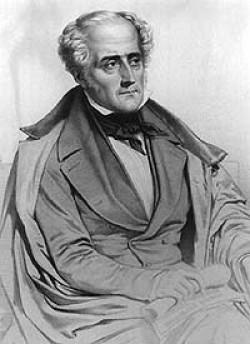
Ambiguous strains of this theme appear in Atala, but the passionate romantic adventure, laced with somewhat awkward biblical symbolism, dominates the plot. Rene, the shorter of the two stories and later paired intentionally with Atala, delved indirectly into unrequited incestuous desire between brother and sister. Outrageously popular, and widely copied in print and in style by dejected, sullen Frenchmen, the story is told using the frame story of a recollection shared by the protagonist with the main character of Rene, himself seeking redemption in the liminal wilderness of the Americas.

Over-dramatically conceived as the ultimate alluring escape, the intense, painterly detail of the natural world in Atala served to titillate and attract the melancholy zeitgeist of French society.

Chateaubriand was exiled from France following the French Revolution, while the world in which he was raised was crushed by evolving attitudes toward monarchy and government. Chateaubriand had never visited the United States, but read some early accounts, and the region in which the events take place, mostly northern Florida, is a fantastic projection of exotic ideals. Along with its twin, Rene, this once-famous novella is set in the American Southeast and is part of a longer, semi-autobiographical epic called Les Natchez. Atala was a milestone in French romanticism, the origin of a globally successful, enduring romantic male archetype.


 0 kommentar(er)
0 kommentar(er)
